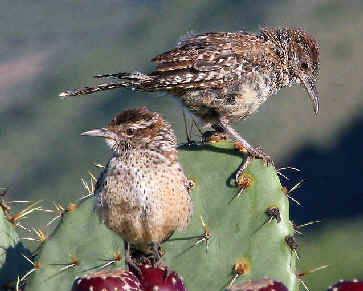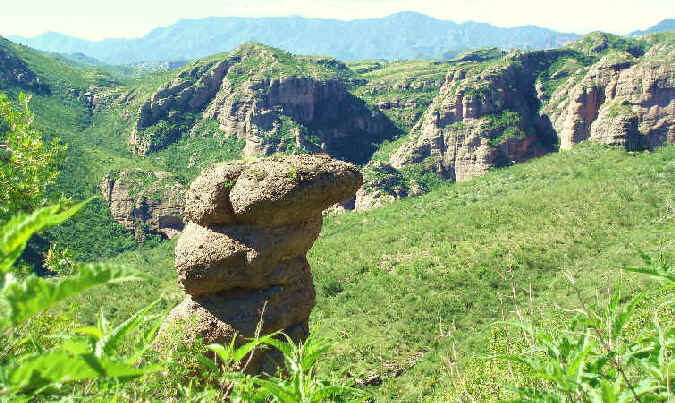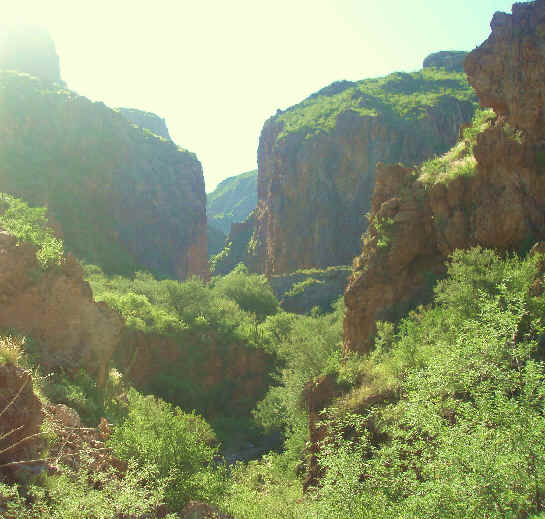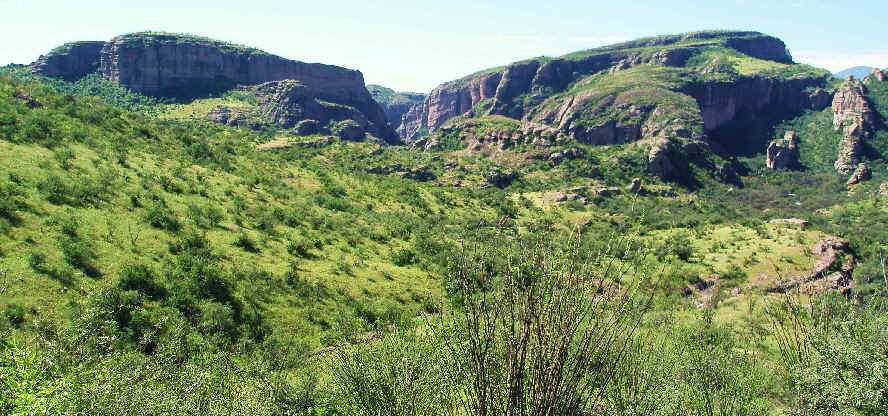 Sonora,
Mexico
Sonora,
Mexico
Birds
Birds found during
Focus On
Nature Tours
in Sonora noted with an (*)
The following list of Sonora Birds
compiled by Armas Hill
Photo at right: two CACTUS WRENS
photographed during a FONT tour
in southern Arizona & Sonora, Mexico
(photo by Doris Potter)
FOLLOWING THIS BIRD-LIST ARE SOME
SCENERY PHOTOS
OF WHERE WE HAVE BEEN DURING FONT TOURS IN SONORA
Codes:
a globally threatened or rare species, designated
by Birdlife International.
(t1): critical (t2): endangered (t3): vulnerable
(nt): a near-threatened species globally.
(i): an introduced species.
(MXe): a species endemic to Mexico
The birds in the list below are coded as to their status IN MEXICO:
(MX1): endangered
(MX2): threatened
(MX3): of special concern (or near-threatened)
jan: found during FONT Sonora tours in January
aug; found during FONT Sonora tours in August
sep: found during FONT Sonora tours in September
Links:
Upcoming
FONT Birding & Nature Tours in Mexico & Central America
A List
& Photo Gallery of Mexico Birds, in 3 parts:
Part 1: Tinamous to Shorebirds Part
#2: Jaegers to Woodpeckers
Part #3: Manakins to Buntings
Mexican
Mammals (with
some photos)
Mexican Butterflies
(with some photos)
Mexican
Reptiles & Amphibians (with
some photos)
Plants
of the Desert & Some Nearby Habitats
(with
some photos)
Directory
of Photos in this Website

Bird-List:
-
Rufous-bellied Chachalaca _____ (has been called
"Wagler's Chachalaca")
Ortalis wagleri
The Rufous-bellied Chachalaca was considered conspecific with the West
Mexican Chachalaca.
- Montezuma Quail (MX3) (*) _____
jan
Crytonyx montezumae mearnsi (has been called "Mearn's Quail"; this
subspecies in northwest Mexico & southwest US) _____
- Northern Bobwhite ______
Colinus virginianus (with 15 subspecies; more in Mexico than for any
other bird)
Colinus v. ridgwayi "Masked Bobwhite"
(MX1) ______
- Scaled Quail _____
Callipepla squamata
- Elegant Quail (MXe) (*) _____
jan (has been called
"Douglas Quail")
Callipepla douglasii
- Gambel's Quail (*) _____ jan,aug,sep
Callipepla gambelii
- Wild Turkey (MX3) (*) _____
jan
Meleagris gallopavo mexicana (northwest & north-central Mexico; this
subspecies known as the "Gould's Wild Turkey", with rectrices and
upper tail coverts tipped with white rather than cinnamon or buff)
- Fulvous Whistling Duck _____ (another
name has been Fulvous Tree Duck)
Dendrocygna bicolor
- Black-bellied Whistling-Duck (*)
______ (another name has been
Black-bellied Tree Duck)
Dendrocygna a. autumnalis
- Greater White-fronted Goose _____
(was called White-fronted Goose)
Anser albifrons
- Snow Goose _____
Chen
(formerly Anser) caerulescens
- Ross's Goose _____
Chen
(formerly Anser) rossii
- Brant Goose (MX2) (*) _____
jan (has
been simply "Brant", or "Black Brant")
Branta bernicla nigricans
- Canada Goose _____
Branta canadensis
- Cackling Goose _____
Branta hutchinsii
- Green-winged Teal (*) _____ jan
Anas carolinensis
- Mallard _____
Anas platyrhynchos
- Mexican Duck (MX2) (*) _____
jan,aug,sep (was
considered conspecific with the Mallard)
Anas diazi
- Northern Pintail _____
Anas acuta
- Blue-winged Teal______
Anas discors
(monotypic)
- Cinnamon Teal _____
Anas cyanoptera
- Northern Shoveler (*) _____ jan
Anas clypeata
- Gadwall (*) _____
jan,aug
Anas strepera
- American Wigeon ______
Anas americana
(monotypic)
- Canvasback _____
Aythya valisineria
- Redhead _____
Aythya americana
- Ring-necked Duck (*) _____ jan
Aythya collaris
- Greater Scaup _____
Aythya marila
- Lesser Scaup (*) _____ jan
Aythya affinis
- White-winged Scoter _____ (was
conspecific with the Velvet Scoter, Melanitta
fusca,
of Europe)
Melanitta deglandi
- Surf Scoter (*) _____
jan
Melanitta perspicillata
- Common Goldeneye _____
Bucephala clangula
- Bufflehead (*) _____ jan
Bucephala albeola
- Hooded Merganser _____
Lophodytes
(formerly Mergus) cucullatus
- Common Merganser _____
Mergus merganser americanus
- Red-breasted Merganser (*) _____ jan
Mergus serrator
- Ruddy Duck (*) _____ jan
Oxyura jamaicensis
- Pacific Loon (*) _____ jan
Gavia pacifica
- Common Loon (*) _____ jan
Gavia immer
- Black Storm Petrel (*)
_____ aug
Oceanodroma melania
- Least Grebe (MX3) (*) ______
jan,aug
Tachybaptus dominicus brachypterus
- Pied-billed Grebe ______
Podilymbus p. podiceps
- Horned Grebe (*) _____ jan
Podiceps auritus cornutus
- Black-necked Grebe (*) _____ jan
(also called Eared Grebe)
Poidiceps nigricollis californicus
- Western Grebe (*) _____ jan
Aechmophorus occidentalis ephemeralis
(south-central & west
central Mexico)
- Clark's Grebe _____
Aechmophorus c. clarkii (north & central Mexico)
- Wood Stork (MX3) ______
Mycteria americana (monotypic)
- American White Ibis (*) ______
jan,aug
Eudocimus albus
(monotypic)
- White-faced Ibis _____
Plegadis chihi (monotypic)
- Roseate Spoonbill ______
Platalea (formerly
Ajaia) ajaja (monotypic)
- Great Blue Heron (*) ______
jan,aug,sep
Ardea h. herodia
- Great Egret (*) ______
jan,aug
Casmerodius (has been
Ardea)
alba egretta
- Little Blue Heron (*) ______
jan
Egretta caerulea (monotypic)
- Snowy Egret (*) ______ jan,aug
Egretta thula (two subspecies
in Mexico)
- Tricolored Heron (*) ______ jan,aug
(was at one time called Louisiana Heron)
Egretta tricolor
- Reddish Egret (MX3) (*) ______ jan,aug
Egretta rufescens
- Western Cattle Egret ______
Bubulcus ibis
- Green Heron (*) ______ aug
Butorides virescens
The Green Heron was at one time
considered conspecific with the nearly-cosmopolitan Striated Heron,
and was then called the Green-backed Heron.
- Black-crowned Night Heron (*) ______
aug
Nycticorax nycticorax hoactli
- Yellow-crowned Night Heron (MX2) ______
Nyctanassa v. violacea (the
single member of its genus)
- Bare-throated Tiger Heron (MX3) ______
Tigrisoma mexicanum
(monotypic)
- American Bittern (MX2) ______
Botaurus lentiginosus
- Least Bittern ______
Ixobrychus exilis
- Magnificent Frigatebird (*)
____ _ aug
Fregata magnificens
(now said to be monotypic)
- American White Pelican (*) ______ jan
Pelecanus erythrorhynchos
(monotypic)
- Brown Pelican (*) ______
jan,aug
Pelecanus occidentalis californicus (subspecies
in west Mexico) _____
- Nazca Booby _____ (was
conspecific with the Masked Booby)
Sula granti
- Blue-footed Booby (*) _____ jan,aug
Sula n. nebouxii
- Brown Booby (*) _____ aug
Sula leucogaster brewsteri (subspecies in west Mexico)


 Sonora,
Mexico
Sonora,
Mexico ![]()


